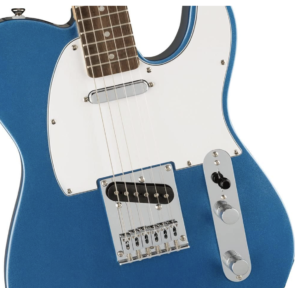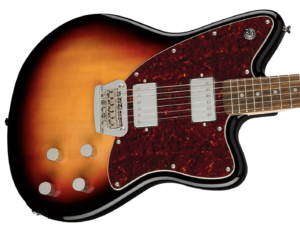Thee C/E guitar chord is a versatile and commonly used chord in the world of guitar playing. It is an essential part of every guitarist’s repertoire, as it provides a smooth transition between C major and other chords.
The C/E chord, often referred to as C/E or C with E bass, offers a unique voicing that adds richness and depth to your chord progressions. In this comprehensive guide, we will explore the C/E chord, its formation, various fingerings, and practical applications.
 Understanding the C/E Chord
Understanding the C/E Chord
Understanding the C/E chord is essential for guitarists who want to expand their chord vocabulary and improve their playing versatility. As mentioned earlier, this guitar chord is an inversion of the C major chord, meaning it contains the same notes but with the E note as the lowest or bass note. This creates a unique and pleasing voicing that can be used in a variety of musical contexts.
Chord Inversions
Inversions are an essential concept in music theory and chord progressions. They allow you to play the same set of notes in different orders, resulting in a fresh sound while maintaining the overall harmony of the chord. Inversions are not limited to the C/E chord; they are applicable to all types of chords.
Also Read:
Top Tips to Play Guitar Chords
 The Role of the Bass Note
The Role of the Bass Note
The bass note is crucial in determining the overall quality and sound of a chord. In the C/E chord, the E note takes the role of the bass note. This creates a different tonal center compared to the regular C major chord, which has the C note as the bass.
Connecting Chords
One of the primary advantages of the C/E chord is its ability to serve as a smooth transition between the C major chord and other chords in a progression. For example, when moving from C major to A minor (Am), the C/E chord acts as a passing chord, leading the ear seamlessly from C major to the following Am chord.
Chord Voicings
Chord voicings refer to the specific order and arrangement of the notes in a guitar chord. The C/E chord is a specific voicing of the C major chord, but there are many other ways to play the C major chord on the guitar. Each voicing offers a unique sound and feel, allowing guitarists to choose the one that best fits the musical context they are playing in.
Use in Different Genres
 The C/E chord is not limited to any particular genre of music. It can be used in various styles, including pop, rock, folk, blues, jazz, and more. Its smooth sound and versatility make it a valuable addition to any guitarist’s chord repertoire.
The C/E chord is not limited to any particular genre of music. It can be used in various styles, including pop, rock, folk, blues, jazz, and more. Its smooth sound and versatility make it a valuable addition to any guitarist’s chord repertoire.
Developing Chord Vocabulary
Learning and understanding the C/E chord is an excellent way to expand your chord vocabulary and develop a deeper understanding of chord theory. By exploring chord inversions and different voicings, you can gain a better grasp of the fretboard and improve your overall guitar playing skills.
Practical Application
To incorporate the C/E chord into your playing, practice transitioning smoothly between the C major and C/E chords. Experiment with different strumming patterns and picking techniques to discover how the C/E chord fits within different chord progressions. Additionally, try using the C/E chord in songwriting to add variety and interest to your compositions.
Formation of C/E Chord
To play the C/E chord, you need to place your fingers in the correct positions on the fretboard. Follow these steps:
- Find the C Major Shape: Begin by playing a regular C major chord. Place your ring finger on the 3rd fret of the 5th (A) string, your middle finger on the 2nd fret of the 4th (D) string, and your index finger on the 1st fret of the 2nd (B) string. Leave the 3rd (G) string open.
- Add the E Bass Note: While keeping the other fingers in place, use your thumb or the side of your index finger to press down on the 2nd fret of the 6th (E) string, which is the note E. This creates the C/E chord voicing, with E as the lowest note.
Different Fingerings for C/E Chord
There are several ways to finger the C/E chord, depending on your playing style and comfort. Here are two alternate fingerings:
- Using the Pinky Finger: Instead of using your thumb or the side of your index finger, you can use your pinky finger to press down on the 3rd fret of the 6th (E) string to create the E bass note.
- Using the Thumb Wrap: Some guitarists prefer to wrap their thumb around the neck and press down on the 2nd fret of the 6th (E) string, while simultaneously fretting the 3rd fret of the 5th (A) string with their index finger, the 2nd fret of the 4th (D) string with their middle finger, and leaving the 3rd (G) string open.
Practical Applications
The C/E chord is widely used in various musical contexts. Here are some practical applications:
- Smooth Chord Progressions: The C/E chord serves as a smooth transition between C major and other chords, especially those with an E bass note, such as Am and Em. Incorporate C/E into your chord progressions to create seamless and harmonically pleasing transitions.
- Alternate Voicing: The C/E chord provides an alternate voicing for C major, giving your chord progressions a fresh sound and adding variety to your playing.
- Songwriting: Use the C/E chord in your songwriting to create interesting chord progressions and add depth to your compositions.
- Acoustic Fingerpicking: The C/E chord is commonly used in acoustic fingerstyle playing, providing a solid foundation for fingerpicking patterns and embellishments.
Discover more from Play Guitar Review
Subscribe to get the latest posts sent to your email.
